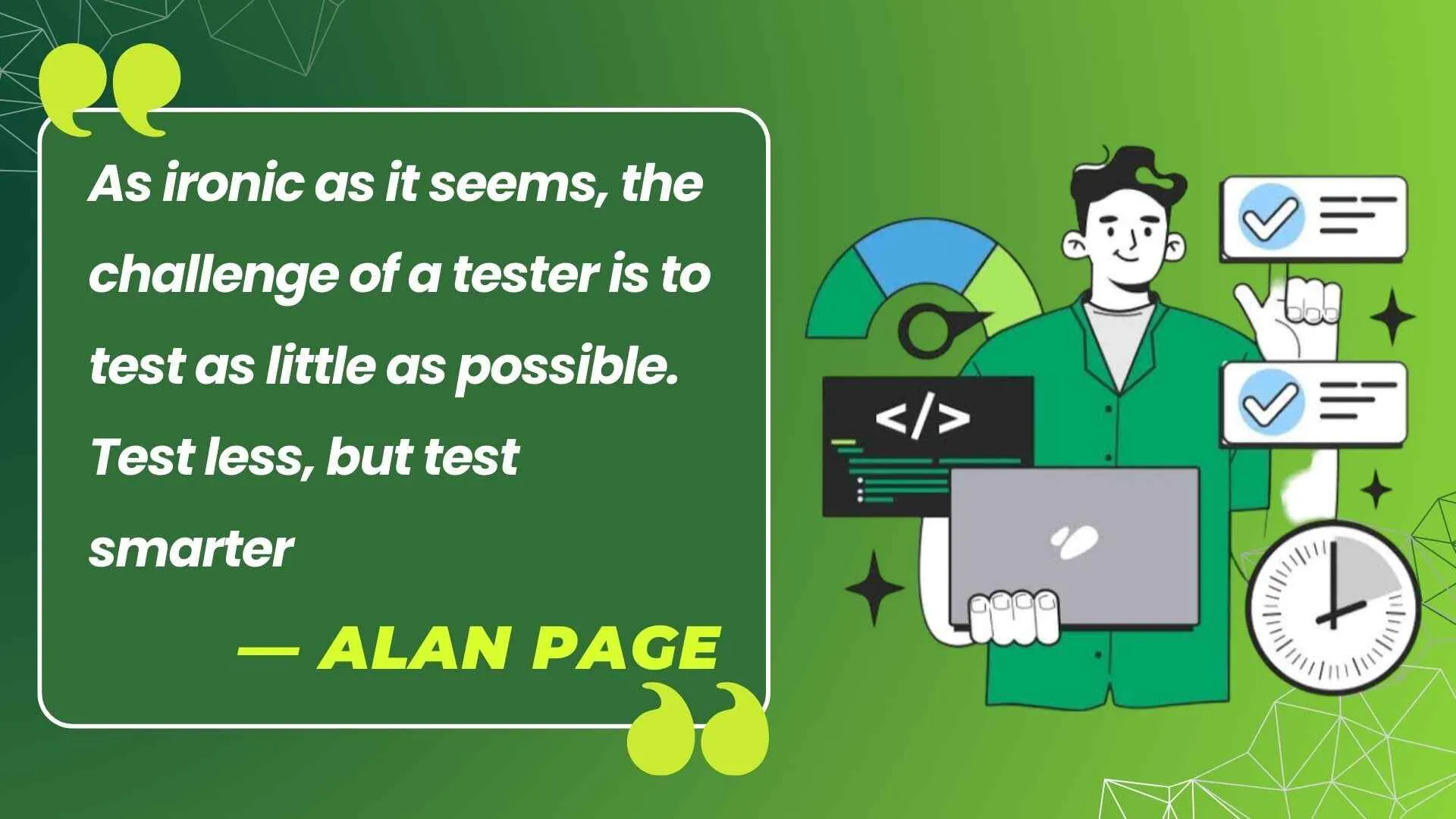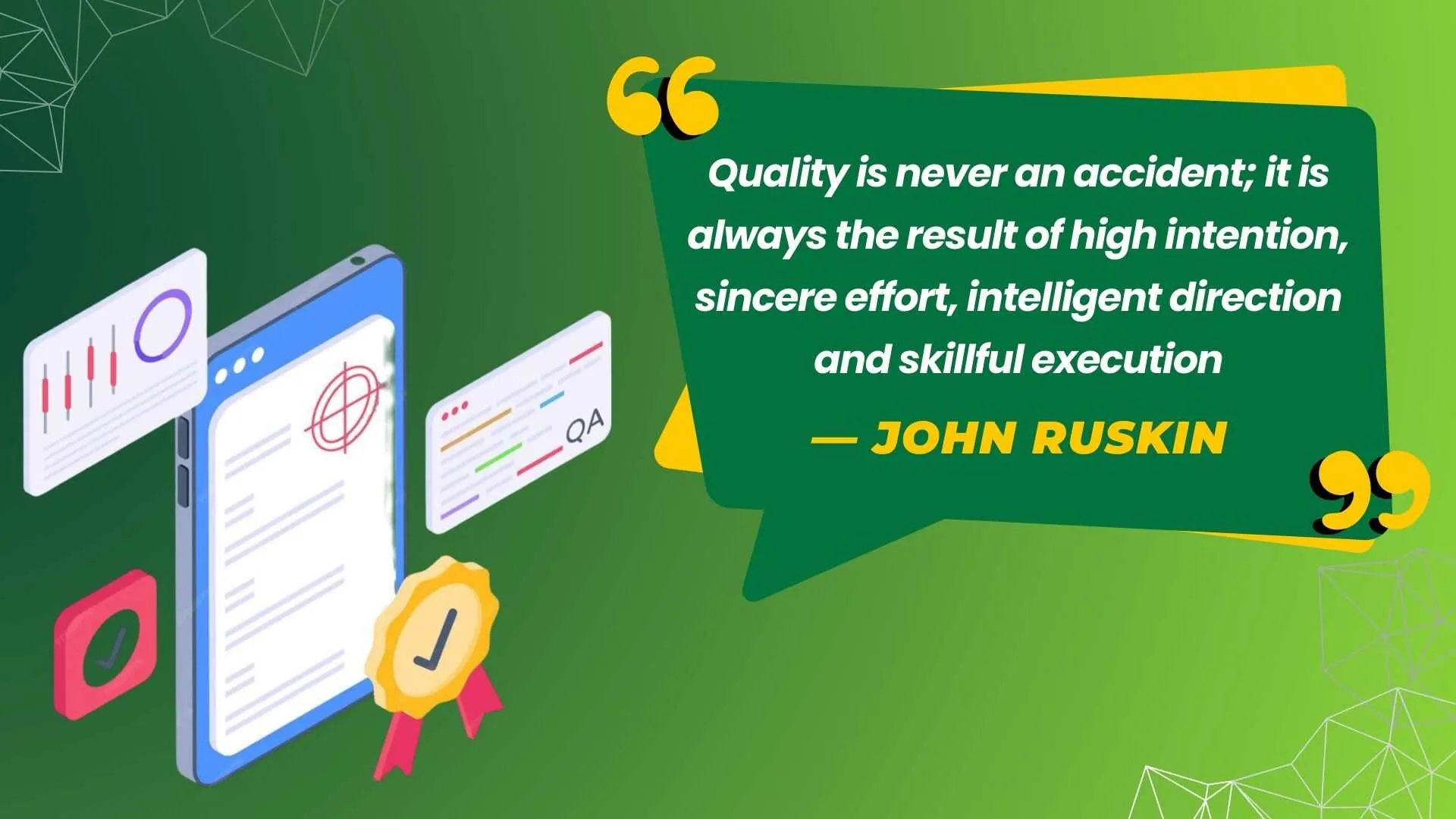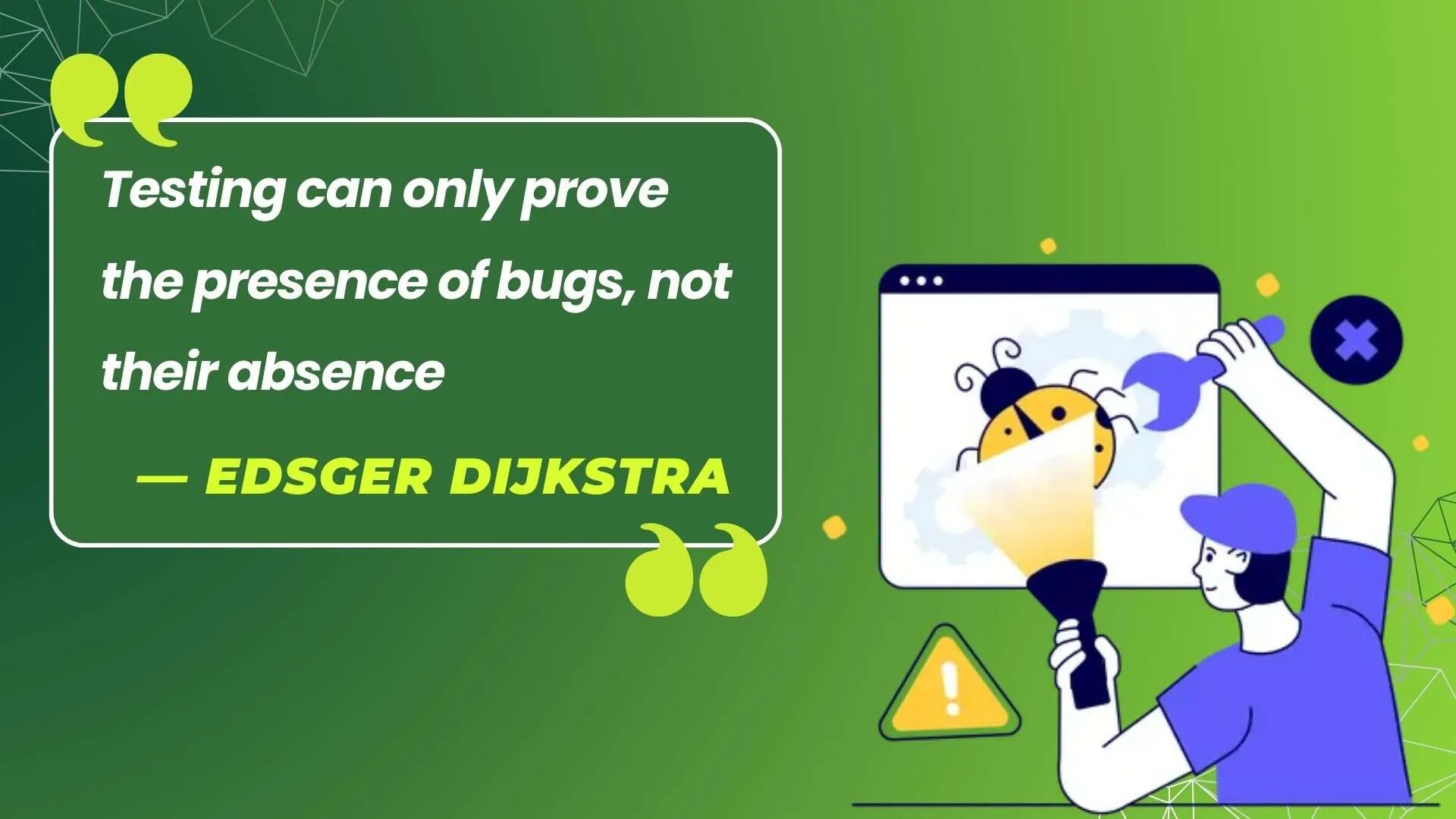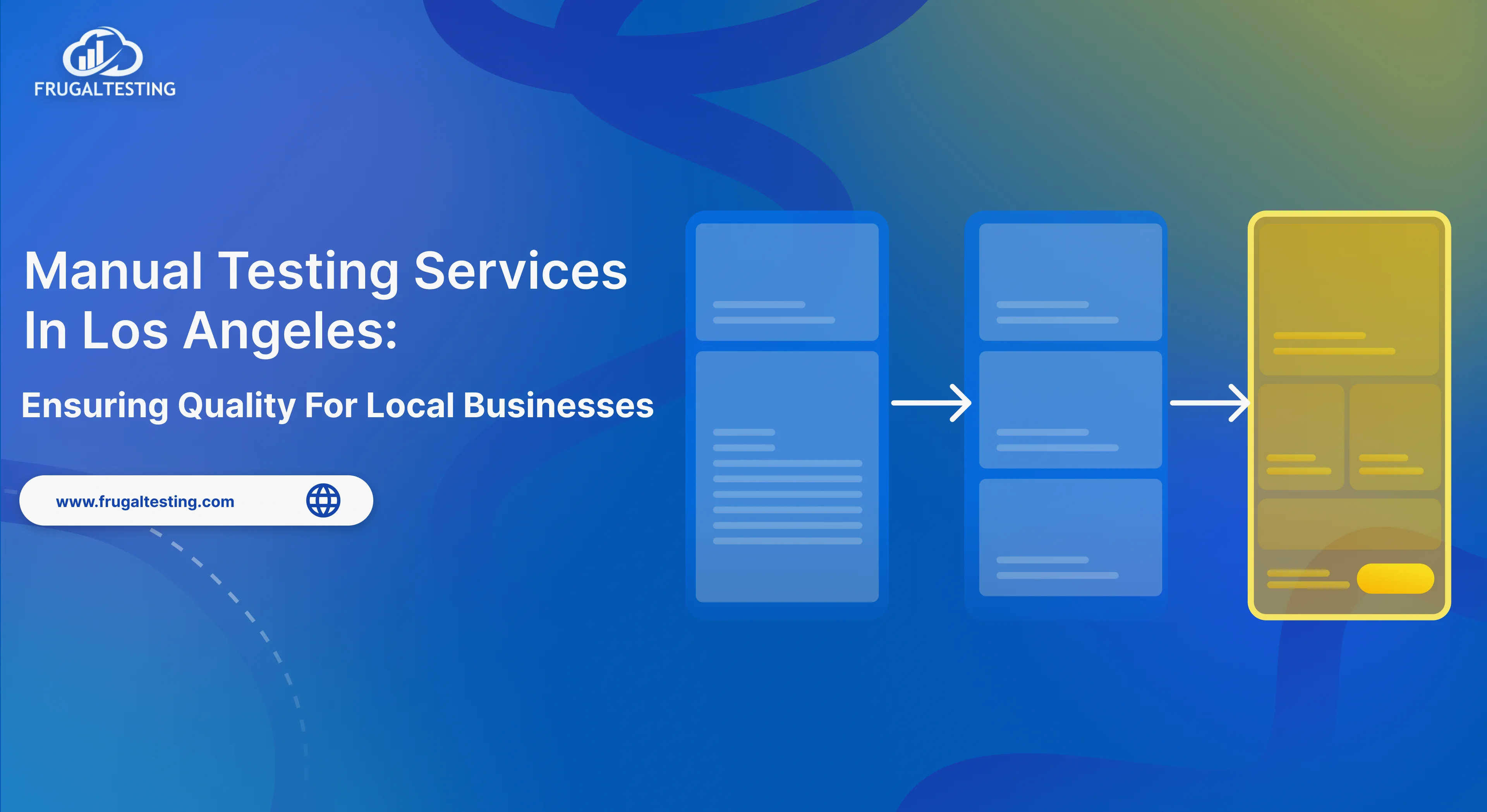🚀 Assuring product quality is now more important than ever. However, it is crucial to recognize the differences between Quality Assurance (QA) and Testing despite the hype around both. QA encompasses a holistic approach to quality management, choosing the type of quality assurance and establishing and maintaining processes, standards, and methodologies to ensure the final product meets defined quality criteria. On the other hand, Testing is a specific activity within the QA process involving executing test cases to identify high-priority defects and validate software functionality.
Experts advise devoting as much as 25% of the development budget to quality assurance.
So let's
📌 Explore the minute details of these procedures.
📌 Expose their functions, working methods, and enabling technologies.
📌 Recognize the fundamental differences between QA and testing, as well as their contemporary methods and the mutually reinforcing connection that makes them possible.
As we go, we will find insightful information that applies to various sectors and helps shape the way forward for producing exceptional and captivating user goods.

What is QA?
💡 A broad term Quality Assurance, or QA (with quality assurance professionals) for short, is a procedure or group of actions to guarantee that a good or service satisfies requirements and quality standards. Planning, carrying out, and reporting testing is necessary to find flaws or potential quality improvement areas.
Maintaining a competitive edge in the market, providing a high level of quality goods and services, and improving customer happiness depend on quality assurance (QA). This proactive strategy prioritizes defect prevention over defect detection.
The project manager, quality assurance engineers, and software test engineers play a crucial role in QA testing by coordinating and overseeing the testing activities throughout the software development lifecycle. These project managers are responsible for defining the testing strategy, allocating resources, and setting timelines for testing milestones.

What is software testing?
🧩 Software testing is a broad term (including unit testing), and it is a part of quality assurance (with quality assurance professionals). It runs a system or software program to identify flaws or confirm that it complies with requirements. Testing employs various approaches and procedures to evaluate the software's usability, security, performance, and functionality.

A crucial step in the software development life cycle, especially in an agile project, is software testing, which verifies that a system or application satisfies requirements and operates accurately and dependably.
Software testing is a must to develop high-quality software solutions and better outcomes with developers who follow quality guidelines and offer a satisfying user experience. To guarantee the dependability and success of software applications and systems, meticulous planning, strict implementation, and ongoing development are necessary.

Exploring several modern QA testing methods
🔍 The difficulties presented by agile development, continuous integration, and the requirement for quicker release cycles have led to the evolution of modern QA testing techniques. Here are a few examples of contemporary QA testing techniques, reflecting the style of software testing:
💡Shift-left testing: Testing activities are incorporated early in the software development lifecycle using the shift-left testing methodology, a type of quality assurance. Early on, including quality assurance (QA) helps testing teams find errors to combat the high cost of errors more quickly, reduce rework, and enhance overall product compliance and product quality.
The shift-left approachto testing advocates for early involvement of testing activities in the software development process.
💡Continuous Testing: Automated testing processes may be carried out continuously during the development process, thanks to continuous testing integration into the CI/CD pipeline.
This speeds up delivery cycles, guarantees quick feedback on testing scripts and code quality changes, and raises release reliability. Each project demands a tailored approach to testing, considering its unique user requirements and constraints.
💡Exploratory Testing: This method, a type of quality assurance, involves quality assurance engineers, software test engineers, and testers investigating the software program without using pre-written test cases. Testers and business analysts assess the user experience and find flaws by applying their creativity, intuition, and topic expertise.
A systematic approach to testing, including creating testing scripts, ensures comprehensive coverage and mitigates risks effectively.

💡Behavior-Driven Development (BDD): The goal of behavior-driven development, or BDD, is to specify software behavior using acceptance criteria and user stories. Tools like Cucumber or SpecFlow are used to write tests and testing scripts in a human-readable manner, which makes it easier for alert developers (outcomes with developers), testers, business logic, and stakeholders to collaborate.
Business logic is crucial in QA testing as it defines the core functionality of a software application, defining data processing, rules application, and system decision-making. QA testing ensures that the software's business logic accurately reflects the requirements and specifications provided by stakeholders. This approach to testing verifies the alignment of the software's business logic with stakeholder expectations.
💡Test-Driven Development (TDD): Test-Driven Development (TDD) is a technique for development in which written tests are performed before implementing lines of code. Based on requirements, alert developers create automated testing processes and unit tests, after which they write lines of code to pass them.
TDD contributes to test coverage, maintainability, and correctness of testing scripts and code quality. A risk-based approach to testing is also used, prioritizing testing efforts based on potential impact and likelihood of failure.

Testing VS Quality Assurance – How testing transforms your product into a user-favorite
🔍 As mentioned earlier, two vital steps in the process of software development are testing (including unit testing) and QA, both of which are critical to the success and compliance with requirements of the final product. Testing concentrates on finding human errors and confirming functionality, whereas QA includes a wider range of tasks to stop errors (and high cost of errors) and guarantee overall excellence.
Testing also involves a proactive approach to testing, enabling rapid feedback and continuous improvement throughout the development lifecycle, reflecting the style of software testing.
Let's delve more into these two steps.

Testing
📝 Testing entails running the entire program to find bugs or faults in software. It includes a variety of testing methods. Testing (including mobile testing) is usually carried out by quality assurance engineers, software test engineer, quality assurance specialists (judging the quality assurance measures), or testers who assess software quality and confirm that the entire program specifications satisfy requirements and operate as intended.
- Finding Defects:
- Testing (including mobile testing) in various production environments helps locate faults, bugs, and unexpected behavior in the software, ensuring code quality.
- Testers follow a methodical process for running test cases to find and report bugs to developers for fixing, aligning with the style of software testing.
- Functionality Verification:
- Functionality Verification (including unit testing and mobile testing), including integration testing, ensures the entire program runs as intended and meets requirements.
- Testers confirm that program specifications satisfy user expectations and complete tasks as planned, aligning with the approach to testing.
- Ensuring Reliability:
- Testing, including integration testing, evaluates software reliability to ensure consistent operation without unexpected crashes or malfunctions, contributing to code quality and product compliance.
- Strategies identify potential problems affecting the software's dependability in real-world settings, reflecting the style of software testing.

Quality Assurance
🎯 Quality assurance, or QA, is a more comprehensive set of procedures to guarantee that high-quality software is consistently produced over the software development life cycle. Instead of bugs in production and defect detection and only detecting flaws through testing, quality assurance (assessing software quality) concentrates on prevention.
- Process Improvement:
- To enhance productivity and quality, QA involves creating and refining development processes, workflows, and methodologies, including user acceptance testing.
- Best practices, standards, and guidelines are implemented to produce dependable, consistent, high-quality software products, incorporating concepts of software testing and quality assurance measures.
- Management of needs:
- QA ensures that needs are precisely stated, understood, and recorded to direct development cycles, regression testing, and testing efforts, contributing to code quality.
- Checking requirements against user needs and expectations helps prevent misconceptions and scope creep, incorporating concepts of software testing.
- Collaborative Testing Approach:
- Foster synergy between testers, senior specialists, quality assurance specialists, developers, those involved in user acceptance testing, and stakeholders to enhance product quality and customer satisfaction.
- Risk management:
- QA evaluates and reduces risks throughout the quality assurance process, software development lifecycle, testing environments, and performance testing, ensuring the reliability of code behavior.
- Proactively addressing problems early on through thorough project analysis helps mitigate timeliness, budget, or quality risks.

How Software Testing and QA work together
🕵️♂️ Software testing and quality assurance (QA) are closely related activities that guarantee delivering high-quality developed products.
This is how they enhance one another:
- Determining Quality Standards:
- QA establishes procedures, policies, and standards to control the entire software development lifecycle and stages of product development, ensuring testing aligns with quality goals.
- Establishing Testing Objectives:
- Collaborates with stakeholders to define testing requirements, priorities, and criteria based on project specifications, business objectives, and the complexity of lines of code, incorporating concepts of software testing.
- Test Strategy and Planning:
- Formulates test strategies, plans, and tactics specifying how testing will be conducted at each stage of development, ensuring compliance with requirements.
- Test Case Design:
- Collaborates with testers and specialists to create test cases verifying software functionality, functional requirements, and user scenarios, ensuring code quality.
- Test Case Execution and Reporting:
- Testers execute test cases based on QA-defined plans and report findings to QA for review and remediation, ensuring compliance with requirements, while QA supervises the testing process to ensure goals are met.
- Understanding programming languages:
- Testers and specialists may need knowledge of programming languages to write automated testing scripts and analyze code behavior for defects (defect detection).
- Foundational understanding of programming languages enhances effectiveness in QA extensive testing.

The pros and cons of quality assurance and software testing
🛠️ The following are the benefits and drawbacks of software testing methods and quality assurance (QA):

A flowchart breakdown of the QA testing journey
📝 Each stage or phase in the QA testing process aims to guarantee the quality of the developed software product (with no bugs in software). The typical steps in a QA testing journey are summarized as follows:

What tools are typically utilized in QA compared to testing
🛠️ Many technologies are used in software testing methods and quality assurance (QA) to improve productivity, automate work with an automation framework (as opposed to manual tests), and expedite procedures. Although some of the tools used in testing and quality assurance are similar, each field has its unique set of tools. When it comes to QA, the following tools are usually used more than in testing:
👉🏻Tools for Project Management and Collaboration: Jira, Trello, and Microsoft Azure DevOps are a few examples of tools that are frequently used to manage user stories, acceptance criteria, and project needs, employing popular techniques in agile project management.
👉🏻Test Management solutions: Test cases are arranged, managed, and carried out using test management solutions like Zephyr, TestRail, or HP ALM/QC, employing popular techniques in test management.
👉🏻Version Control Systems: Source code behavior, testing scripts, and other project artifacts must be managed using version control systems like Git, Subversion (SVN), or Mercurial, employing popular techniques in version control.
👉🏻Collaboration Tools: Slack, Microsoft Teams, Confluence, and other similar platforms help entire team members and engineering team, stakeholders, and project partners communicate and work together more easily, utilizing popular techniques in collaboration tools.

Final Words
🚀 We have learned that the distinction between Quality Assurance (QA) and functional testing is critical in the software development industry since both are necessary to guarantee the delivery of high-quality products and high-quality outcomes (outcomes with developers). While aspects of testing focus on rigorously examining and validating functionality, quality assurance testing proactively approaches fault prevention by defining methods, standards, and guidelines.
Organizations must go through the product development process and produce solutions that exceed user expectations by utilizing a mix of automation framework and automation tools and distinct processes specifically designed for QA and other aspects of Testing. 🚀

People also ask
👉🏻What are the key distinctions between QA and Testing processes?
Regarding procedures, the main differences between QA and testing are that QA focuses on preventing faults and guaranteeing overall quality, whereas testing verifies functionality and finds errors.
👉🏻Does testing involve any automation?
Automation and automation framework (broad term) is frequently used in functional testing to streamline procedures, increase productivity, and enhance customer experience.
👉🏻Is QA only applicable to software development?
QA is useful for various processes and businesses outside the entire software development process, contributing to improved customer experience.
👉🏻What are some examples of non-testing activities in QA?
Stakeholder management and their management approach, process optimization, and requirements analysis are non-testing QA tasks.
👉🏻What is the difference between quality assurance and quality control?
While quality control entails finding and fixing flaws via testing and inspection, quality assurance testing emphasizes preventing problems through proactive procedures.





%201.webp)

